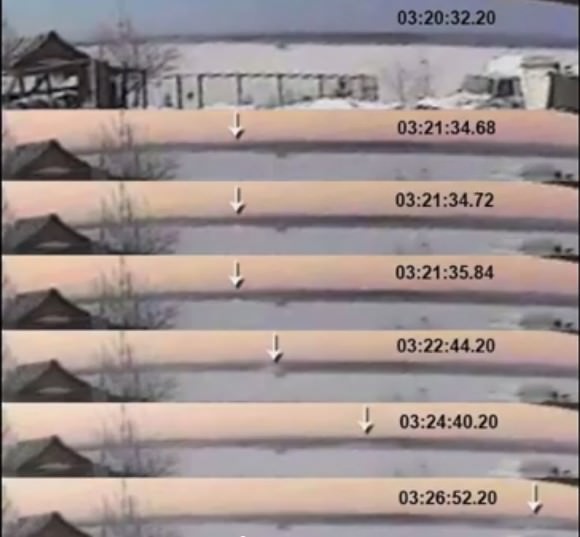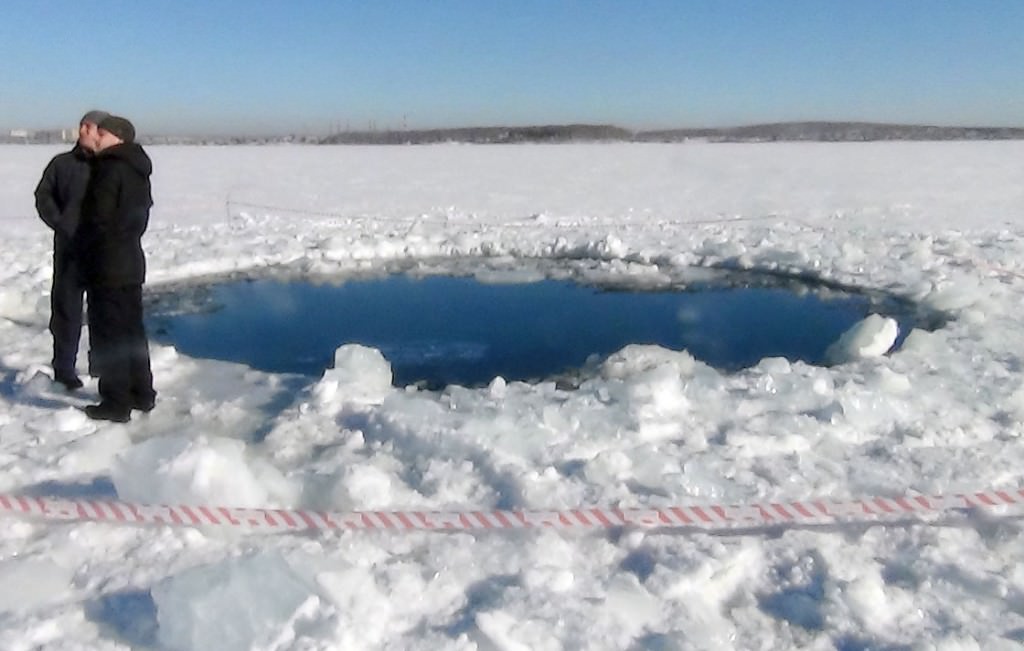Security camera video showing the impact of the largest piece of the Chelyabinsk meteorite striking Lake Chebarkul during the Feb. 15, 2013 Russian fireball. Credit: Nikolaj Mel’nikov.
When I first watched this video of the half-ton Chelyabinsk meteorite crashing into Lake Chebarkul last Feb. 15 I didn’t see anything. But once you pay close attention, what you’ll see is nothing short of amazing. You’ll recall that a 20-foot (6 meter) hole appeared in the ice immediately after the fall. While no one witnessed the impact, a security camera caught the critical moment from the other side of the lake.
The video recently appeared in an online presentation by Peter Jenniskens, noted meteorite expert and senior research scientist at the SETI Institute. It was released as part of a paper and Powerpoint on the Chelyabinsk airburst. You can listen to Jenniskens’ presentation HERE.

When you watch the video, focus your attention just to the left of what looks like an ice fishing shack at top center and use the handy frame grab above. In the slowed-down portion of the footage you’ll see a cloud of ice and snow blow up and quickly drift to the right of the shack seconds after impact. While blurry and small, it’s amazing good fortune we have a document of this fall.
Video of the recovery of the largest piece of the Chelyabinsk meteorite
Divers ultimately fished the 1/2 ton Chelyabinsk meteorite – the largest found so far – from the lake on Oct. 16. It measured 5 feet long (1.5 meter) and broke into three pieces as scientists hoisted it into a scale to weigh it.
As a return favor, the little piece of heaven broke the scale.


I really, really don’t understand the editing choices in (at least the YouTube version of) that video. In the first run-through, they’ve sped it up so much that – even after repeated viewings – I simply can’t see the event. Then they flash the framegrab for less than a second. Only then do they show the zoomed-in relevant section of footage, and I agree that it’s very cool… But what’s with the rest of it? Why speed through the raw footage? Why does white text on a black background stay on the screen for so much longer than the screengrab?
Very cool science; extremely weird presentation.
Edit: On re-watching yet again, the relevant section is zoomed slightly but not rotated.
Video hobbyist quibbles: The still with multiple pictures goes past far too fast for you to see what it is. The first part of the video is essentially irrelevant.
However – the bit at the end was awesome.
WAY double extre groovy cool! Interesting that security camera’s and ‘dash cams’ are so prevalent in Russia.. got ‘boogey men’? We certainly do. Isn’t it so Mr. Steve Cohen
Second part is awesome. You can see impact at 0:40 (at about 0.25 and 0.25 from upper left corner). Then cloud of snow moves to the right.
Cannot play top video — it says that it is private. 🙁
Try this link: http://www.youtube.com/watch?v=ocME3KueHdY